Fumitory
- Scientific name: Fumaria officinalis
- Family: Fumariaceae
- Medical Action: Laxative, alterative, cholagogue, hepatic, diuretic, and aperient, a weak tonic, slightly diaphoretic,
- Constituents: Alkaloids, bitter principle, mucilage, fumaric acid, amino acids, resin. The plant contains isoquinoline alkaloids protopine and allocryptopine.
- Parts Used: Leaves
- Other Fumitories: American Fumitory Fumaria Indica, or Codder Indian
The Basics
Earth smoke, as it is also called, is a wild poppy plant traditionally used as an incense herb with a stimulating effect on liver and gallbladder and as a protection against skin diseases and eczema. The drug fumitory is toxic in high doses.
Fumitory has been known since antiquity and was described in herbals from the Middle Ages. Fumitory is a predominantly Mediterranean genus that once was used medicinally. Traditional preparation involved expressing the juice and evaporating it. It has been used as a laxative and diuretic.
Fumaria species are used in Turkish folk medicine as a blood purifier and an anti-allergic agent.
In traditional medicine, the plant has been used to treat eczema and other dermatologic conditions. It was thought to be good for the eyes, and to remove skin blemishes. In modern times herbalists use it to treat skin diseases, and conjunctivitis; as well as to cleanse the kidneys.
Fumitory has a long history of use in the treatment of skin problems such as eczema and acne. Its action is probably due to a general cleansing mediated via the kidneys and liver. Fumitory may also be used as an eyewash to ease conjunctivitis.
The name is said to be derived either from the fact that its whitish, blue-green colour gives it the appearance of smoke rising from the ground, or, according to Pliny, because the juice of the plant brings on such a flow of tears that the sight becomes dim as with smoke, and hence its reputed use in affections of the eye.
Constituents
The leaves yield by expression a juice which has medicinal properties. An extract, prepared by evaporating the expressed juice, or a decoction of the leaves, throws out upon its surface a copious saline efflorescence. Fumaric acid was early identified as present, and its isomerism with maleic acid was established later.
The alkaloid Fumarine has been believed to be identical with corydaline, but it differs both in formula and in its reaction to sulphuric and nitric acids. It occurs in colourless, tasteless crystals, freely soluble in chloroform, less so in benzine, still less so in alcohol and ether, sparingly soluble in water.
Etymology
The “smoky” or “fumy” origin of its name comes from the translucent color of its flowers, giving them the appearance of smoke or of hanging in smoke, and the slightly gray-blue haze color of its foliage, also resembling smoke coming from the ground, especially after morning dew.
The plant was already called fūmus terrae (smoke of the earth) in the early 13th century, and two thousand years ago, Dioscorides wrote in De Materia Medica and Pliny the Elder in Naturalis Historia that rubbing the eyes with the sap or latex of the plant causes tears, like acrid smoke (fūmus) does to the eyes.
Its Greek name is kapnos (καπνός, for smoke) and the name fumewort now applies mostly to the genus Corydalis, especially the similar looking Corydalis solida (formerly Fumaria bulbosa), which was thought to belong to the same genus as fumitory.
Description
Fumitory is an annual plant of somewhat variable characteristics, often resembling a bush, but also growing as a low, trailing shrub. It has gray, pointed leaves that, at a distance, give the plant a wispy appearance of smoke (hence the common name). The pink-purple flower blooms in spring. The flowering plant (aerial parts) traditionally has been used in herbal medicine.
The herb is small and slender, with weak, straggling, or climbing stems, decompound leaves, and clusters or spikes of small flowers of a pinkish hue, topped with purple, or more rarely, white. The leaves have no odour, but taste bitter and saline. The plant flowers almost throughout the summer in fields, gardens, and on banks, and in ditches, spreading with great rapidity.
At Mudgee, in New South Wales, it was reported to have smothered a wheat crop. Shakespeare makes several references to the herb. An interesting peculiarity is that it is very seldom visited by insects. It is self-fertile, and sets every seed.
The Fumitories, of which Corydalis and Fumaria are the only two fully British genera, are distinguished in the Order of Fumariaceae by having one of the petals swollen or spurred at the base, and a oneseeded capsule which does not open.
The climbing fumitory, or Allegheny vine, is a North American plant of another genus (Adlumia). Several genera of the family are native to South Africa.
Habitat and Cultivation
A small annual plant, a common weed in many parts of Europe, including Britain, and naturalized in the United States.Europe and America, also found in parts of Asia, Australia and South Africa.
Despite the fact that the vivid red/purplish blooms of the common fumitory make the plant a gorgeous annual herb in gardens and fields, currently it is usually regarded as a weed. The seeds of fumitory sprout during the early part of spring and the plants are generally ready to blossom in May. Fumitory plant possesses the aptitude to enduring long periods of frosting during autumn.
It is interesting to note that in spite of being a very familiar herb, fumitory can conceal itself very well in the midst of other vegetation which becomes quite difficult to trace it. Even insects often fail to notice the plant and, hence, the plants of this species require self-pollinating to yield seeds.
It should be collected when in flower, which is throughout the summer.
Medicinal Uses
Fumitory has a long history of use in traditional medicine and has been investigated for its therapeutic potential in the management of cardiovascular and hepatobiliary disorders and psoriasis. Limited evidence suggests that fumitory may have cardiovascular benefits, but there is no clinical data to substantiate this claim.
Fumaria extracts also may be useful in the management of disorders of the hepatobiliary tract. F. officinalis is approved in Germany for the colicky pain affecting the gallbladder and biliary system, together with the GI tract. F. officinalis is approved in Germany for the colicky pain affecting the gallbladder and biliary system, in addition to the GI tract.
Furmaric acid esters have been used as a treatment for psoriasis for nearly 30 years, and there is renewed interest in this area by dermatologists.
Research also reveals no clinical data regarding the use of fumitory for diabetes, although there is 1 animal study indicating its potential use in lowering glucose levels.
Fumitory is used to treat intestinal spasms and irritable bowel syndrome (IBS); and to start the flow of bile, a fluid that is important for the digestion of fats and is produced by the liver.
Fumitory is also used for skin conditions, eye irritation (conjunctivitis), heart problems, fluid retention, and constipation.
Physicians and writers from Dioscorides to Chaucer, and from the fourteenth century to Cullen and to modern times value its purifying power. The Japanese make a tonic from it. Cows and sheep eat it, and the latter are said to derive great benefit from it. The leaves, in decoction or extract, may be used in almost any doses. When reduced and thickened, the juice has also been employed, also a syrup, powder, poultice, distilled water, and several tinctures.
French and German physicians still prefer it to most other medicines as a purifier of the blood; while sometimes the dried leaves are smoked in the manner of tobacco, for disorders of the head. Dr. Cullen, among its good effects in cutaneous disorders, mentions the following:
‘There is a disorder of the skin, which, though not attended with any alarming symptoms of danger to the life of the patient, is thought to place the empire of beauty in great jeopardy; the complaint is frequently brought on by neglecting to use a parasol, and may be known by sandy spots, vulgarly known as freckles, scattered over the face. Now, be it known to all whom it may concern, that the infusion of the leaves of the above described plant is said to be an excellent specific for removing these freckles and clearing the skin; and ought, we think, to be chiefly employed by those who have previously removed those moral blemishes which deform the mind, or degrade the dignity of a reasonable and an immortal being.’
Fumitory is primarily used internally for liver and gallbladder problems, scabies, jaundice, and other skin problems, dermatitis, stomach disorders, cures nausea, vomiting, and exanthema. Larger doses act as a laxative and diuretic, but excessive doses can cause diarrhea and stomachache.
For chronic constipation, use fumitory in combination with other appropriate herbs.
A weak tonic, slightly diaphoretic, diuretic, and aperient; valuable in all visceral obstructions, particularly those of the liver, in scorbutic affections, and in troublesome eruptive diseases, even those of the leprous order. A decoction makes a curative lotion for milk-crust on the scalp of an infant.
Nicholas Culpeper, 1653, writes:
Saturn owns the herb, and presents it to the world as a cure for his own disease, and a strengthener of the parts of the body he rules. If by my astrological judgment of diseases, from the decumbiture, you find Saturn author of the disease, or if by direction from a nativity you fear a saturnine disease approaching, you may by this herb prevent it in the one, and cure it in the other, and therefore it is fit you keep a syrup of it always by you.
The juice or syrup made thereof, or the decoction made in whey by itself, with some other purging or opening herbs and roots to cause it to work the better (itself being but weak) is very effectual for the liver and spleen, opening the obstructions thereof, and clarifying the blood from saltish, choleric, and adust humours, which cause leprosy, scabs, tetters, and itches, and such like breakings-out of the skin, and after the purgings doth strengthen all the inward parts. It is also good against the yellow-jaundice, and spends it by urine, which it procures in abundance.
The powder of the dried herb given for some time together, cures melancholy, but the seed is strongest in operation for all the former diseases. The distilled water of the herb is also of good effect in the former diseases, and conduces much against the plague and pestilence, being taken with good treacle. The distilled water also, with a little water and honey of roses, helps all sores of the mouth or throat, being gargled often therewith.
The juice of the fumitory and docks mingled therewith, cures all sorts of scabs, pimples, blotches, wheals, and pushes which arise on the face or hands, or any other parts of the body.
Preparation and Dosage
Pour a cup of boiling water onto 1 to 2 teaspoonfuls of the dried herb and let it infuse for 10 to 15 minutes. This should be drunk freely, but for skin problems it should be drunk at least three times a day.
- Infusion: steep 1 heaping tsp. herb in 1 cup water. Take cold, a wineglassful at a time, every 4 hours.
- Cold extract: use 1 tsp. herb with 1/2 cup cold water. Let stand for 8-10 hours. Take 1/2 to 1 cup per day.
- Tincture: take 1 to 2 ml of the tincture three times a day.
- Fluid extract: 1/2 to 1 drachm.
Of Fumarine, 1/3 or 1/4 of a grain is moderately excitant; 3 grains are first irritant, then sedative. Of the expressed juice, 2 fluid ounces or more, twice a day. Of fluid extract, 1/2 to 1 drachm.
For dyspepsia, 2 oz. of the flowers and tops may be macerated in 3 pints of Madeira wine, and taken twice a day in doses of 2 to 4 fluid ounces.
Note: Despite its numerous therapeutic properties, it is advisable to exercise some caution while using fumitory. Using the herb in excessive amounts may result in tranquilizing and hypnotic after-effects, particularly if the herb is taken continuously for around eight days. See also the precautions and warnings at the bottom of this post.
Old Recipes and Prescriptions
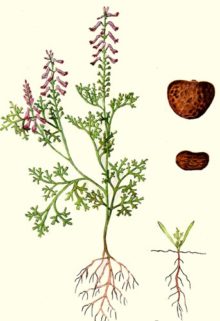 The Liquid Juice four or five spoonfuls in the morning, fasting, with a glass of white Port wine. It purges a little downwards, but more especially if mixed with an infusion of Senna in wine. It purifies the blood from salt, choleric, or viscous humours, and strengthens all the Viscera, not leaving any evil quality behind it.
The Liquid Juice four or five spoonfuls in the morning, fasting, with a glass of white Port wine. It purges a little downwards, but more especially if mixed with an infusion of Senna in wine. It purifies the blood from salt, choleric, or viscous humours, and strengthens all the Viscera, not leaving any evil quality behind it.
The Essence has all the virtues of the former, but is more efficacious. A safe remedy also against adult choler and melancholy or obstructions which are the cause of choleric and putrid fevers, jaundice, Strangury of Urine through Gravel, Sand, or Viscous Matter, all of which it expels in abundance.
Dose 5 or 6 spoonfuls in white wine or clarified whey.
The Syrup Whether made of the juice or greenherb, has all the virtue, but is weaker in operation, and therefore ought to be given mixed with the Syrup of Damask Roses or Peach Blossoms, or Tincture of Senna. Very effectual against Jaundice, Dropsy, and Gout, and is a most singular thing against hypochondriack melancholy in any person whatsoever.
The Decoction in Water or Wine Weaker than the above, and 6 to 8 oz. may be given in the morning, fasting.
The Power of the Dried Herb. A drachm, with half a drachm of Powder of Esula Root, and given in 5 or 6 spoonsful of the essence of juice, causes vomiting and cleanses the stomach and bowels, effectual against Dropsy, Scurvy, Jaundice, Gout and Rheumatism, but because it stirs up much wind, should be corrected with a few drops of oil of Anise or Fennel Seed, or with the Powder of the same.
The Collurium. 3 ounces of Juice or Essence of Fumitory, mixed with one ounce each of distilled Water of Fumitory, and honey. An excellent thing against sores, inflamed, running and watery Eyes. Also a healing Gargle.
Drops in the Eyes clear the sight and take away redness. If the Juice be mixed with equal parts of Juice of Sharp-pointed Docks and Wine Vinegar, and a contaminated Skin be washed therewith, it cures it of Scabs, Itch, Wheals, Pimples, Scurf, etc.
The Distilled Water has the virtues of the Juice, but is much weaker, and may be used as a Vehicle for any of the other Preparations. Taken with good Venice Treacle, it is good against Plague, driving forth the Malignity by sweat.
The Spirituous Tincture is good against Plague, Fevers, Colic, and Griping of the Guts, whether in Young or Old.
Dose, 2 to 3 drachms in Canary or other fit vehicle.
The Acid Tincture is an excellent Antiscorbutick, good against Vapors and Tumors which cause fiery Eruptions. Causes a good Appetite and a strong Digestion. To be given in all the patient drinks, so many drops as may give the Liquor a grateful or pleasant acidity, and to be continued for some time.
The Saline Tincture cures Scabs, Pimples, Leprosy, etc., by bathing or well washing the parts affected therewith, as hot as can be endured, and continuing for some considerable time.
The Powder of the Seed. Stronger than the Powder of the Herb, prevalent against the Dropsy, being given daily with 10 to 12 grains of Scammony. A drachm of the simple powder, morning and night, especially in an infusion of Senna, may do wonders in Melancholy.
Combinations
It may usefully be combined with Burdock, Cleavers, or Figwort.
Folklore and Historical Uses
According to the ancient exorcists, when the plant is burned, its smoke has the power of expelling evil spirits, it having been used for this purpose in the famous geometrical gardens of St. Gall. There is a legend that the plant was produced, not from seed, but from vapours arising out of the earth.
Folk and Common Names
- Beggary
- Earth Smoke
- Fleur de Terre
- Fumée de Terre
- Fumeterre
- Fumiterry
- Fumus
- Fumus Terrae
- Hedge Fumitory
- Herba Fumariae
- Herbe à la Jaunisse
- Herbe à la Veuve
- Kaphnos
- Nidor
- Scabweed
- Scheiteregi
- Taubenkropp
- Vapor
- Wax Dolls
Other Uses
Apart from the therapeutic uses of fumitory, this annual plant is also used for industrial uses. The flowers are used to make a yellow dye for wool. Owing to its emollient (softening and relaxing) attributes, this herb also forms an active ingredient in several cosmetics, especially facial tonics.
Special Precautions and Warnings
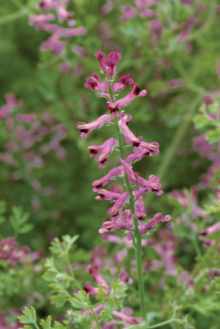 Fumitory is POSSIBLY SAFE for most adults when taken by mouth in the recommended amounts for a short period of time. But taking large amounts of fumitory by mouth is POSSIBLY UNSAFE. It can cause trembling, convulsions, and death.
Fumitory is POSSIBLY SAFE for most adults when taken by mouth in the recommended amounts for a short period of time. But taking large amounts of fumitory by mouth is POSSIBLY UNSAFE. It can cause trembling, convulsions, and death.
Don’t use eye drop preparations of fumitory that haven’t been commercially sterilized. You might get an eye infection if the drops contain bacteria.
- Pregnancy and breast-feeding: There is not enough reliable information about the safety of taking fumitory if you are pregnant or breast-feeding. Stay on the safe side and avoid use.
One Response to Fumitory
Leave a Reply
Rennie Luttrull: queen-annes-lace-seeds
Rosanna: Spignel aka Bald Money
Annamarie Squatrito: Fumitory
EILEEN Klinghagen: Pumpkin
Mahmudul Hasan: Celery
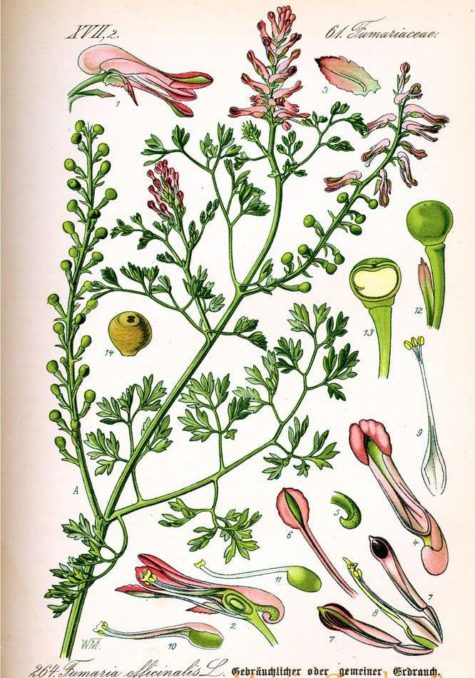
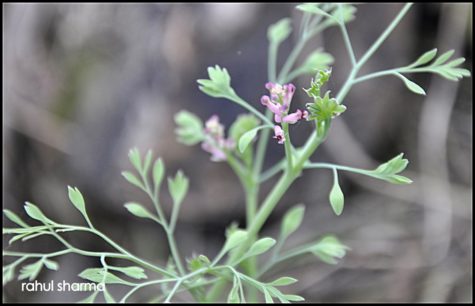
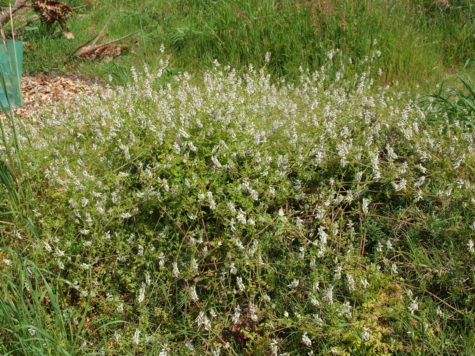
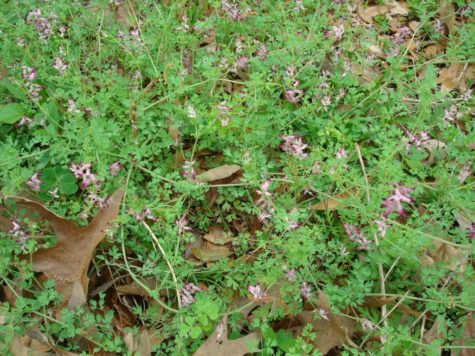
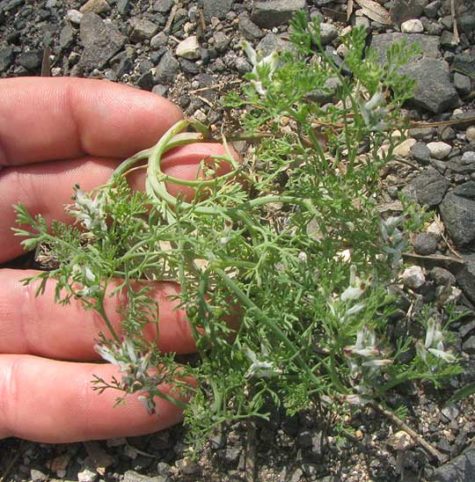


Can’t find the seeds to grow it. Who sells.these auditory seeds or plants